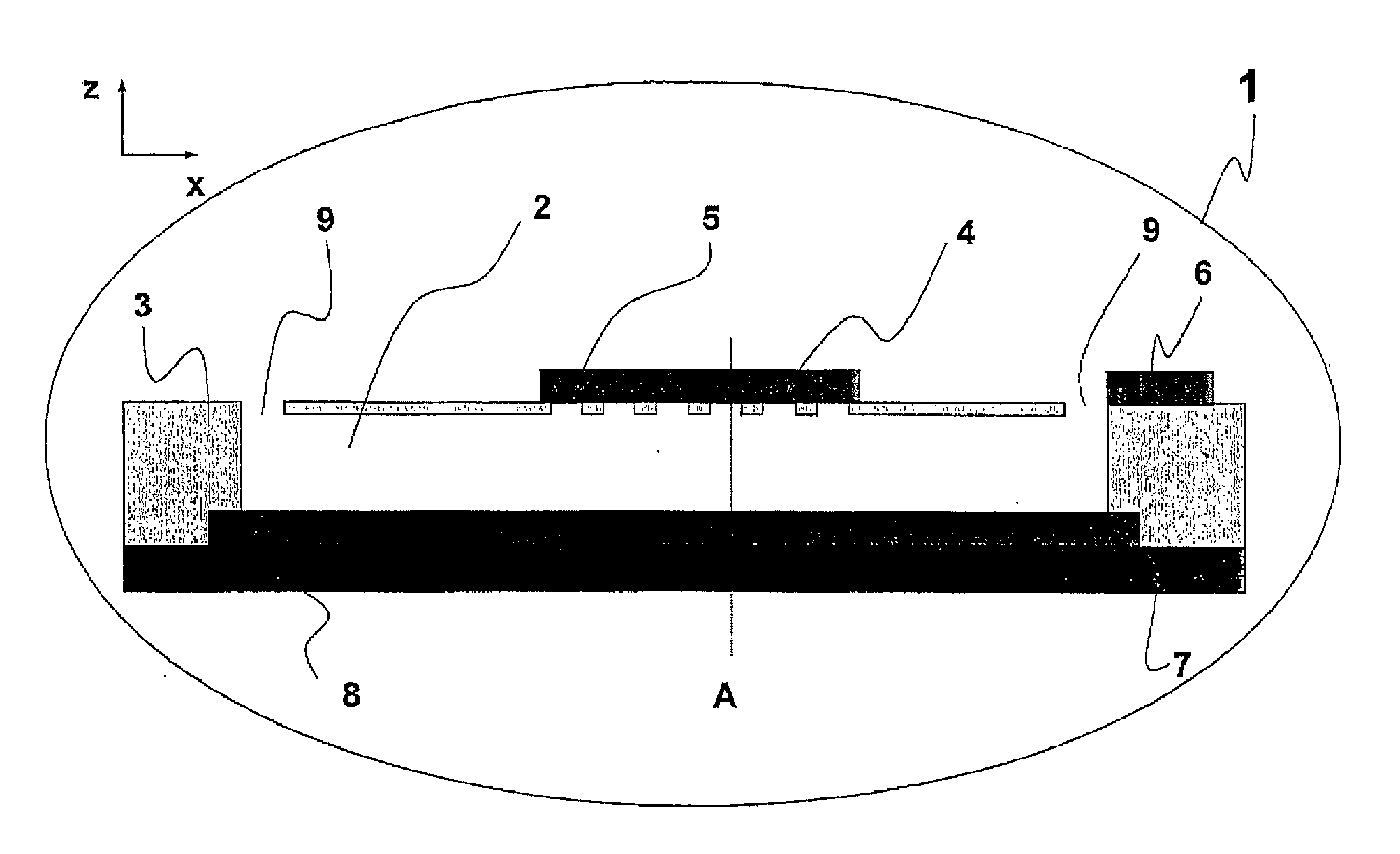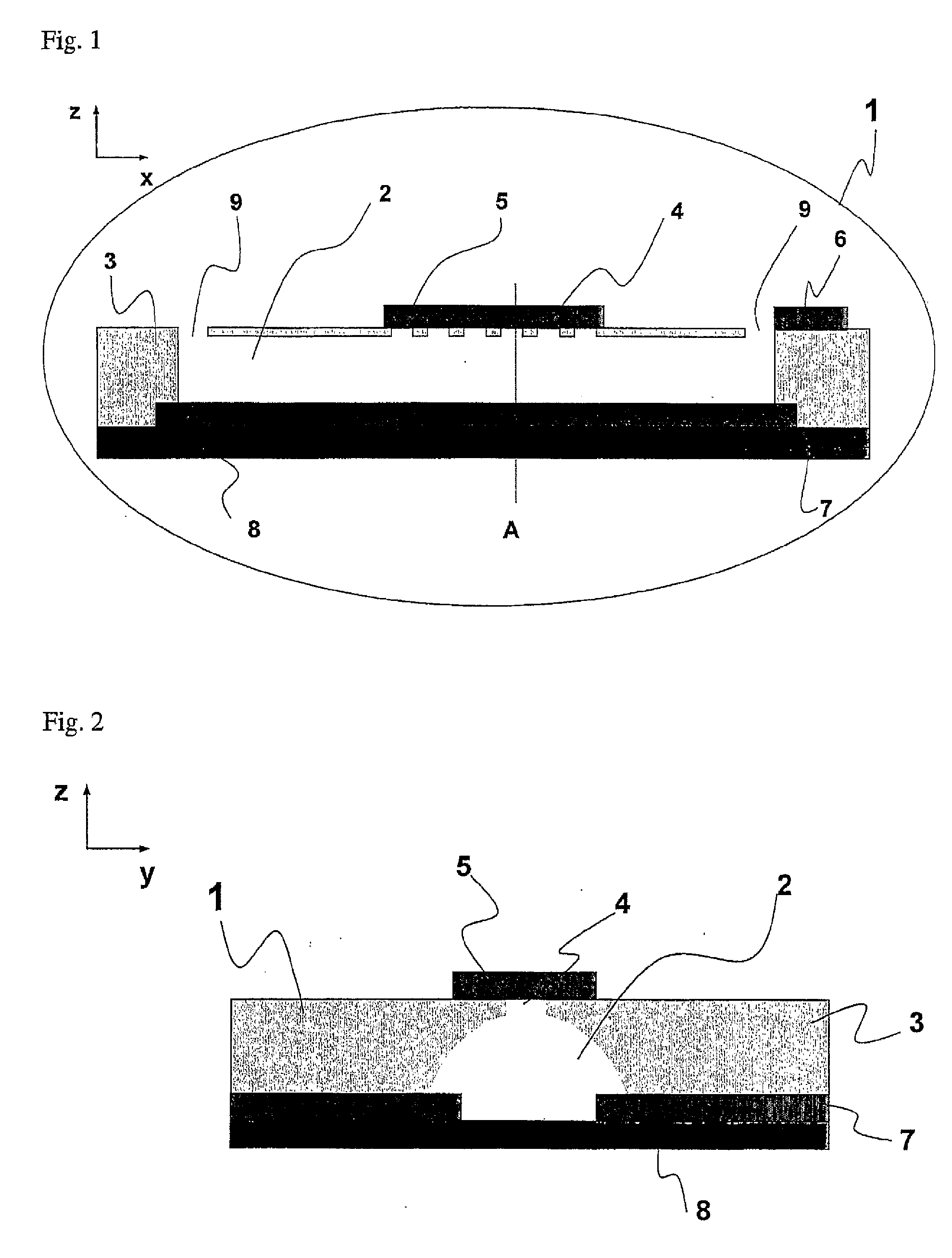Microfluidic Device with Minimized Ohmic Resistance
a microfluidic device and ohmic resistance technology, applied in the field of miniaturisation of analytical devices, can solve the problems of unfavorable conduction current conduction of microstructures in the typical dimensions of microstructures, and achieve the effects of minimizing resistance, increasing measured signals, and improving analytical sensitivity of devices
- Summary
- Abstract
- Description
- Claims
- Application Information
AI Technical Summary
Benefits of technology
Problems solved by technology
Method used
Image
Examples
Embodiment Construction
[0053]FIG. 1 is a longitudinal cross-section view of an example of microfluidic device of the present invention (1) which comprises a microstructure (2) fabricated in a substrate (3) (selected preferentially from, but not limited to, a non-conducting polymer material), said microstructure comprising one or a plurality of microelectrode(s) or microelectrode array(s) (4) as working electrode(s), generally exhibiting one or several conducting connection pad(s) (5) for connection to an external potentiostat, as well as an electrically conductive means (7) which is in direct contact with the microstructure(s) and which, in the present case, is placed in front of the working microelectrode(s), on the opposite side of the microstructure substrate. The microstructure of FIG. 1 is sealed by a cover layer (8), which can for instance be glued or laminated at the end of the fabrication process. In the case of FIG. 1, the microstructure is a microchannel comprising access holes (9) serving as in...
PUM
| Property | Measurement | Unit |
|---|---|---|
| capillary radius | aaaaa | aaaaa |
| resistance | aaaaa | aaaaa |
| thickness | aaaaa | aaaaa |
Abstract
Description
Claims
Application Information
 Login to View More
Login to View More - R&D
- Intellectual Property
- Life Sciences
- Materials
- Tech Scout
- Unparalleled Data Quality
- Higher Quality Content
- 60% Fewer Hallucinations
Browse by: Latest US Patents, China's latest patents, Technical Efficacy Thesaurus, Application Domain, Technology Topic, Popular Technical Reports.
© 2025 PatSnap. All rights reserved.Legal|Privacy policy|Modern Slavery Act Transparency Statement|Sitemap|About US| Contact US: help@patsnap.com



